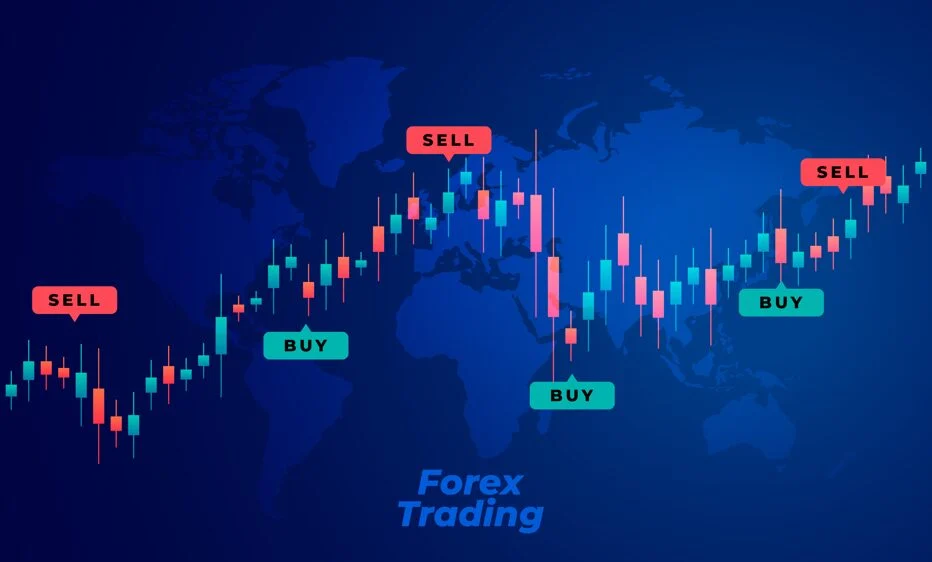In the ever-evolving world of currency markets, mastering Forex Trading requires more than just a basic understanding of currency pairs and exchange rates. To stand out from the competition and increase the probability of long-term success, traders must embrace advanced techniques that go beyond beginner-level tactics. The beauty of advanced Forex Trading strategies is that they allow you to gain a deeper understanding of market dynamics, refine risk management, and develop consistent profitability. Whether you’re an experienced trader seeking to sharpen your edge or an ambitious intermediate ready to step up, mastering advanced strategies is a game-changer.
Why Advanced Forex Trading Strategies Matter
Many traders make the mistake of thinking that the more complex the strategy, the higher the chance of success. In reality, advanced Forex Trading strategies are not about complexity for its own sake—they are about precision, discipline, and adaptability. While basic strategies rely on simple entry and exit signals, advanced methods combine market context, multi-timeframe analysis, risk-to-reward optimization, and trade psychology to create a robust trading plan. By integrating these strategies, traders can better navigate volatile markets, reduce emotional decision-making, and spot profitable opportunities others may overlook.
Price Action Mastery: Reading the Market Like a Pro
One of the most valuable advanced Forex Trading techniques is price action mastery. Price action involves studying historical price movements without relying heavily on indicators. Advanced traders use candlestick patterns, support and resistance zones, and market structure to anticipate price direction. By understanding how the market “breathes” through price action, traders can spot trend reversals, continuation patterns, and key breakout opportunities. This method gives a raw, unfiltered look at the market, allowing for faster and more accurate decision-making.
Multi-Timeframe Analysis for Clearer Market Context
A single timeframe can be misleading in Forex Trading. For example, a 15-minute chart might show a strong downtrend, but a daily chart could reveal an overall uptrend. Multi-timeframe analysis involves checking different chart intervals to confirm trade setups. An advanced trader might identify the primary trend on a higher timeframe and then find precise entries on lower timeframes. This approach filters out noise and ensures that trades are aligned with broader market momentum, significantly improving success rates.
Fibonacci Extensions and Retracements in Advanced Trading
Fibonacci tools are often used by advanced Forex Trading professionals to pinpoint potential entry, stop-loss, and take-profit levels. By applying Fibonacci retracements during pullbacks in trending markets, traders can find high-probability re-entry points. Likewise, Fibonacci extensions help estimate how far the market may move after a breakout. This strategic use of mathematical ratios gives traders a systematic edge in predicting market reactions with greater accuracy.
Harmonic Patterns for Precision Entries
Harmonic patterns, such as the Gartley, Bat, and Butterfly formations, are geometric price structures that rely on Fibonacci ratios for identification. These patterns are a powerful advanced Forex Trading tool for anticipating market reversals with remarkable precision. While they require practice to identify correctly, once mastered, they offer low-risk, high-reward opportunities and can fit seamlessly into a disciplined trading plan.
Advanced Risk Management Techniques
At the heart of sustainable Forex Trading lies superior risk management. Advanced traders often implement asymmetric risk-to-reward setups, where the potential reward is at least two to three times the risk taken. They also diversify position sizing based on volatility, using tools like the Average True Range (ATR) to set adaptive stop-loss levels. Advanced strategies also include scaling in and out of positions, hedging against market uncertainty, and using partial profits to lock in gains while leaving some trades open to capture bigger moves.
Algorithmic and Automated Trading Systems
With the rise of technology, algorithmic trading has become a cornerstone of advanced Forex Trading. These systems use pre-programmed rules to execute trades automatically, removing human emotions from the decision-making process. Algorithmic strategies can range from simple moving average crossovers to complex artificial intelligence models analyzing vast amounts of market data. The key advantage is consistent execution based on tested parameters, even when the trader is away from the charts.
News and Fundamental Event Trading
While many traders focus primarily on technical analysis, advanced Forex Trading also incorporates a solid understanding of fundamentals. News events, central bank announcements, and economic indicators can cause significant volatility in the market. Advanced event traders prepare by identifying high-impact news releases and creating trade plans that capitalize on these moves while managing risk carefully. This often involves using pending orders to catch sharp breakouts or fade overreactions.
Correlation and Intermarket Analysis
Advanced traders understand that Forex markets don’t operate in isolation. Currency pairs often correlate with commodities, indices, and even bonds. For example, the Australian dollar is closely linked to commodity prices, while the Japanese yen often strengthens during global risk aversion. By studying these relationships, traders can gain deeper insights into market direction and hedge against unwanted exposure.
The Psychology of Advanced Forex Trading
No matter how technically skilled a trader becomes, the mental aspect remains decisive. Advanced Forex Trading demands discipline, emotional control, and patience. This means sticking to a plan during losing streaks, resisting the urge to overtrade, and keeping a long-term perspective. Many successful traders use trading journals to track performance and identify emotional patterns that might undermine their decision-making.
Building Your Own Advanced Trading Plan
Ultimately, advanced Forex Trading strategies must be personalized. What works for one trader might not suit another’s personality, risk tolerance, or schedule. Building a plan involves selecting a core set of strategies, defining clear entry and exit criteria, setting risk limits, and testing everything in a demo or small live account before scaling up. Consistency is key—refinement comes from real-world experience and continuous learning.
Conclusion: Moving Beyond the Basics
Moving into advanced Forex Trading is not about abandoning what you know—it’s about expanding and refining it. By incorporating price action mastery, multi-timeframe analysis, Fibonacci tools, harmonic patterns, sophisticated risk management, and a strong psychological foundation, you can create a robust, adaptable trading strategy. The journey from beginner to advanced trader is challenging but deeply rewarding, and the strategies you learn along the way will give you a competitive edge in the highly dynamic Forex market.



